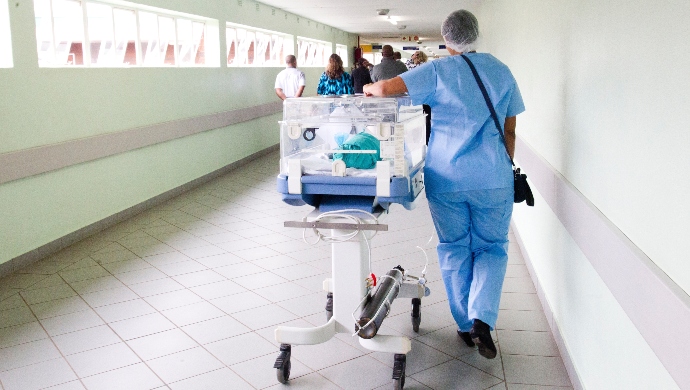Hospitals are staring at a future of immense strain, and augmented reality is key to easing the pressure

We live in challenging times for healthcare across the globe. Growing populations have caused an unprecedented strain on the accessibility of doctors, while longer life expectancy and ageing populations world have led to high levels of demand around the clock.
The Nuffield Trust reports that the UK’s National Health Service could need access to as many as 17,000 more hospital beds by 2022 as well as the staff and equipment to support their occupants.
While these are admittedly troublesome times for many health organizations worldwide, there’s still plenty of cause for optimism for the future of healthcare thanks to developments in augmented reality.
AR may seem like an unlikely hero for the healthcare industry. Afterall, its biggest achievements to date come in the form of social media filters and interactive games such as Pokemon Go!
But emerging technologies like remote AR are capable of greatly boosting efficiency and accuracy within surgeries and hospitals – and even at home – regardless of how many industry professionals are positioned locally.
Remote AR
The beauty of remote augmented reality is that it has the power to become a powerful collaboration tool for practitioners and industry professionals.
When AR developers WATTY announced a first-of-its-kind cross-platform augmented reality solution, healthcare professionals could be forgiven for missing the news or being unaware of its implications for their industry.
But the development of WATTY Remote, a technology that utilizes AR to connect multiple users around the world by displaying their avatars on the screens of users around the world, can pave the way for flawless visual guidance and tutelage from peers based in remote locations.
If surgeons in London could share their environment in real-time with their counterparts in Hong Kong during complex surgical procedures, the peers could collaborate and embed visual guidance in a bid to ensure accuracy and efficiency in a way that could prove to be life-saving for patients.
The Proximie principle
One business that’s aiming to optimize the collaborative potential that remote augmented reality holds is Proximie. The business aim for Proximie is simple: “expand clinical access, meet patient demand and scale expertise with our augmented reality technology.”
Proximie works by tapping into cloud technology that’s capable of operating at really low bandwidth, meaning that it can work in virtually any environment.
The platform is entirely hardware neutral which means there are no fiddly distractions for practitioners, and the software provides digitally created content that’s layered on to a live video stream using the latest augmented reality technology to provide ‘hands-on’ virtual assistance.
It effectively enables a remote surgeon to virtually ‘scrub-in’. Delivering realistic, real-time and meaningful collaboration.
The amazing industry potential that Proximie poses in bringing unparalleled levels of accuracy during surgeries was summed up by a patient of Guy’s and St Thomas Hospital, London, who was full of praise for the approach:
“I was told about the technology that would be used – I thought it was amazing that it allowed an expert to lead a surgical procedure taking place in a different location. I hope it makes things easier for people in future.”
Accurate diagnoses
Remote AR also has a notable role to play in the delivery of diagnoses from doctors.
The Washington Post recently ran a story that calculated as many as 20 per cent of patients with serious illnesses are initially misdiagnosed.
But thanks to the collaborative potential of remote augmented reality, this figure can be minimized with relative ease.
The ease in which doctors could remotely collaborate with a colleague and broadcast a visual image of a patient’s symptoms whilst ensuring their anonymity to ensure a credible and swift second opinion could prove to be not only time-saving but life-saving.
The accuracy of diagnoses is imperative to the welfare of healthcare patients, while an efficient diagnosis of symptoms can not only ensure that there will be fewer recurring patient visits in future but also decrease the time spent by doctors struggling to identify complaints at their surgery.
DocPAL
Another valuable interpretation of augmented reality can be found in Zugara’s AR system, DocPAL.
While DocPAL’s use of augmented reality is also remote, it’s based on long-distance patient consultations with doctors and features an augmented display that can be used by practitioners to better communicate with their patients.
Longer life expectancy should be something that’s marvelled at, not feared by health professionals amid shrinking budgets and increasing populations.
Luckily, technology is being developed to counter the strains that the industry faces each and every day. In an augmented future, the world could reap the rewards of a collaborative health system that’s scalable enough to last.
—
Photo by Hush Naidoo on Unsplash
The post How augmented reality will become the hero of the healthcare industry appeared first on e27.